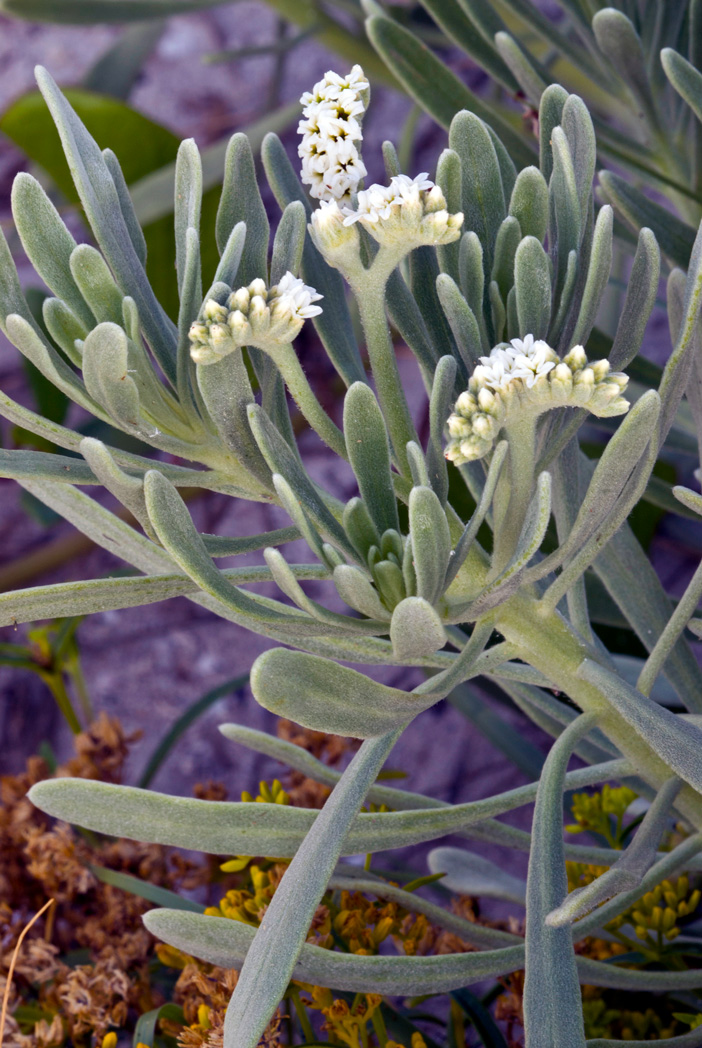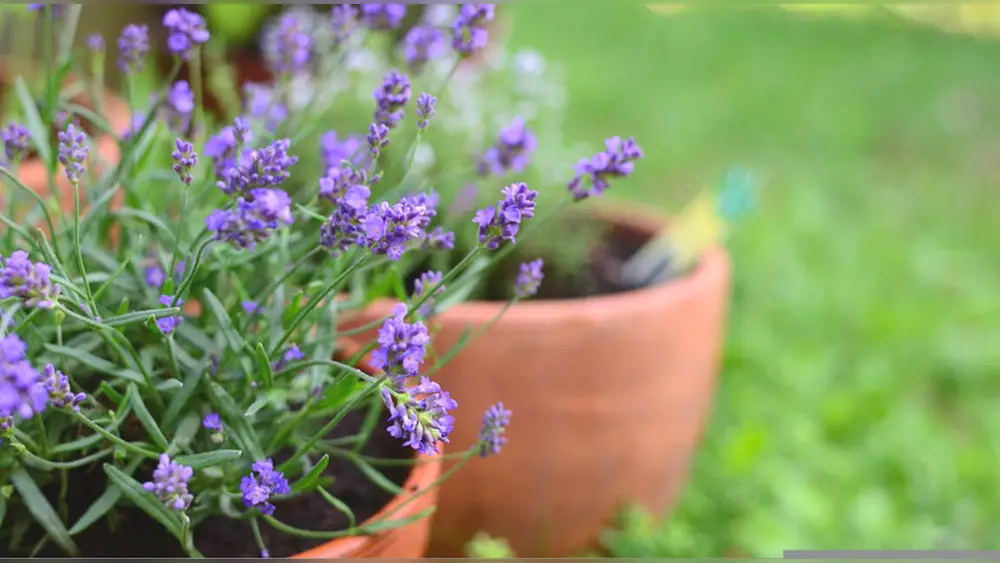If you’ve ever dreamed of filling your Florida garden with the calming scent and beautiful purple hues of lavender, you might have wondered: where is the best place to plant lavender in Florida? Growing lavender here isn’t as simple as in cooler, drier climates.
The heat, humidity, and frequent rain can make it tricky for this Mediterranean herb to thrive. But don’t give up just yet. With the right spot, variety, and a few smart tricks, you can enjoy thriving lavender plants right in your own yard.
Keep reading to discover exactly where and how to plant lavender in Florida so it flourishes despite the challenges—and turns your garden into a fragrant paradise you’ll love.

Credit: www.flawildflowers.org
Lavender Varieties For Florida
Choosing the right lavender variety is key to thriving plants in Florida’s warm climate. Some types handle heat and humidity better than others. This section highlights three lavender varieties suited for Florida gardens.
French Lavender
French lavender grows well in Florida’s humid environment. It tolerates moisture better than English lavender. The plant has narrow leaves and produces fragrant purple flowers. French lavender thrives in well-drained soil and full sun. It adds color and scent to gardens near the coast.
Fernleaf Lavender
Fernleaf lavender suits Florida’s hot weather perfectly. Its fine, feathery foliage stays green all year. This variety blooms with soft purple flowers that attract pollinators. Fernleaf lavender prefers sandy soil with good drainage. It is a hardy choice for Florida’s sandy and coastal areas.
Spanish Lavender
Spanish lavender tolerates heat and humidity well. It features long flower spikes with vibrant purple blooms. The plant has leathery leaves that resist pests and diseases. Spanish lavender grows best in full sun and dry soil. It is ideal for sunny spots in Florida gardens.
Ideal Planting Times
Choosing the right time to plant lavender in Florida is important for healthy growth. The state’s warm climate and humidity can challenge lavender plants. Planting during cooler months helps the roots settle well. It also reduces risks from heat and moisture. Understanding the best planting times can improve your lavender garden’s success.
Fall Planting Benefits
Planting lavender in fall is ideal in Florida. The cooler weather allows roots to grow strong. Fall rains help the soil stay moist without being wet. This reduces the chance of root rot. Plants get a head start before hot summer arrives. Lavender planted in fall is usually healthier and blooms better.
Spring Planting Tips
Spring planting works well after the last frost date. Choose early spring, from February to May, for best results. The soil warms up, encouraging quick root growth. Avoid planting too late to prevent heat stress. Use well-drained soil to keep roots dry. Water plants lightly but regularly until established.
Top Locations In Florida
Florida offers several ideal spots for growing lavender, despite its humid climate. Choosing the right location helps lavender thrive and produce fragrant blooms. Understanding Florida’s diverse regions can guide your planting success.
Coastal Areas
Coastal areas in Florida provide sandy soil and good drainage. Lavender prefers well-drained soil, making these spots suitable. Salt air can be a challenge, but many lavender types tolerate it well. Morning sun and afternoon shade protect plants from intense heat. Consider planting near the Gulf Coast or Atlantic shores for best results.
Central Florida
Central Florida has a balanced climate with warm days and cooler nights. This region’s soil varies but often drains well, helping lavender roots stay healthy. Choose raised beds or pots with added sand for better drainage. Central Florida’s mild winters allow lavender to establish roots before summer heat. Fernleaf lavender grows well here due to its heat tolerance.
Panhandle Region
The Panhandle offers a cooler climate compared to southern Florida. Lavender benefits from the milder temperatures and lower humidity. The sandy soil in this region is perfect for lavender planting. Ensure full sun exposure to maximize bloom production. The Panhandle is ideal for gardeners seeking to grow French or Spanish lavender varieties.

Credit: www.reddit.com
Soil And Drainage Needs
Lavender thrives best in soil that drains quickly and does not hold excess moisture. Proper soil and drainage prevent root rot and fungal problems common in Florida’s humid climate. Preparing the right soil and ensuring good drainage is key to healthy lavender plants.
Sandy Soil Preparation
Florida’s sandy soil naturally drains well, which lavender prefers. To improve nutrient levels, mix compost or organic matter into the sandy soil. This adds nutrients and helps the soil hold just enough moisture. Avoid heavy clay or overly rich soils that trap water around roots.
Using Raised Beds
Raised beds improve drainage by lifting lavender above the natural soil level. They allow excess water to flow away quickly. Build beds with well-draining soil mix, including sand, compost, and perlite. Raised beds also warm faster in spring, helping roots grow strong early.
Improving Pot Drainage
Lavender in pots needs excellent drainage to avoid soggy roots. Choose pots with large drainage holes. Add a layer of gravel or broken pottery at the bottom before adding soil. Use a light, sandy soil mix designed for cacti or succulents. Water only when the soil feels dry.
Sunlight And Watering
Sunlight and watering play a key role in growing healthy lavender in Florida. These plants thrive with the right light and moisture levels. Adjusting these factors to Florida’s climate will improve your lavender’s growth and bloom.
Sunlight Requirements
Lavender needs full sun to grow well. It requires at least 6 to 8 hours of direct sunlight daily. Choose a spot that gets sun most of the day. Avoid shaded or heavily wooded areas. Sunlight helps lavender produce more flowers and strong stems. In Florida, the bright sun is usually perfect. Just watch for afternoon shade in hot summer spots to avoid leaf scorch.
Watering Practices
Lavender prefers dry soil and does not like too much water. Water the plants deeply but let the soil dry out between watering. Overwatering causes root rot and weak plants. In Florida’s humid climate, reduce watering frequency. Morning watering is best to allow leaves to dry quickly. Use well-draining soil or pots with drainage holes. This helps prevent water from sitting around the roots. Proper watering keeps lavender healthy and fragrant.
Protecting Lavender From Humidity
Humidity in Florida creates a tough environment for lavender. High moisture levels cause stress and invite problems. Protecting lavender from humidity is essential for healthy growth. Proper care helps plants thrive despite the climate challenges.
Fungal Disease Prevention
Humidity promotes fungal diseases like root rot and powdery mildew. Avoid overwatering to keep soil dry. Use well-draining soil to prevent water buildup. Trim plants regularly to improve air circulation. Remove dead leaves to reduce disease risk. Apply natural fungicides if needed to control infections early.
Location Strategies
Choose a sunny spot that gets at least 6 hours of sunlight daily. Plant lavender where wind can flow freely around it. Avoid low areas where water collects after rain. Raised beds or containers help improve drainage. Space plants apart to reduce humidity buildup. These steps limit moisture and support strong, healthy plants.
Growing Lavender In Containers
Growing lavender in containers suits Florida’s warm and humid climate well. Containers allow better control over soil and moisture. You can move pots to shaded or sunny spots as needed. This flexibility helps protect lavender from extreme weather. Container growing is perfect for patios, balconies, and small spaces.
Choosing The Right Pots
Select pots made of breathable materials like terracotta or unglazed ceramic. These materials help soil dry faster and prevent root rot. Choose pots at least 12 inches deep to allow root growth. Make sure the pot has several drainage holes. Avoid plastic pots without holes; they trap water and cause problems. Light-colored pots reflect heat and keep roots cooler.
Drainage Enhancements
Good drainage is essential for healthy lavender. Place a layer of gravel or small stones at the pot’s bottom. This layer stops soil from blocking drainage holes. Use a well-draining soil mix with sand or perlite added. Avoid heavy garden soil that holds too much water. Water plants only when the top inch of soil feels dry. Proper drainage prevents fungal diseases common in Florida’s humidity.
Common Challenges And Solutions
Growing lavender in Florida has unique challenges. The state’s heat and humidity can stress the plants. Lavender prefers dry, well-drained soil and cooler temperatures. Understanding common problems helps gardeners grow healthy lavender. Solutions focus on soil care and managing Florida’s climate.
Root Rot Avoidance
Root rot is a major issue for lavender in Florida. Wet soil and poor drainage cause roots to decay. Plant lavender in raised beds or pots with drainage holes. Use sandy, well-draining soil to prevent water buildup. Avoid overwatering; only water when soil is dry. Mulch with gravel or sand to keep soil dry. These steps reduce the risk of root rot and keep plants healthy.
Heat Stress Management
Florida’s high temperatures can cause heat stress in lavender. The plants may wilt or stop blooming. Plant lavender where it gets morning sun and afternoon shade. This protects plants from harsh afternoon heat. Water deeply but less often to encourage strong roots. Use shade cloth during extreme heat spells. Choose heat-tolerant varieties like Fernleaf or Spanish lavender. Managing heat keeps lavender vibrant and thriving in Florida gardens.

Credit: www.greenwoodnursery.com
Frequently Asked Questions
What Type Of Lavender Grows Best In Florida?
French Lavender and Fernleaf Lavender grow best in Florida. These heat-tolerant varieties handle humidity well. Plant in well-drained soil with full sun exposure for optimal growth.
When Should You Plant Lavender In Florida?
Plant lavender in Florida from fall to spring, between September and May. Choose cooler, less humid months to avoid fungal issues. Use heat-tolerant varieties like Fernleaf lavender and ensure well-draining soil or pots for best results.
Does Lavender Like To Be Crowded?
Lavender does not like to be crowded. Provide at least 12-18 inches between plants for good air circulation and growth.
Does Lavender Like Sun Or Shade?
Lavender thrives best in full sun, requiring at least six hours of direct sunlight daily. It struggles in shade and prefers well-drained soil.
Conclusion
Planting lavender in Florida requires care and the right location. Choose a sunny spot with well-drained soil. Use pots or raised beds to avoid wet roots. Select heat-tolerant varieties like Fernleaf or French lavender. Plant during cooler months, from fall to spring, to help roots grow strong.
Water sparingly and avoid humid conditions that cause disease. With these simple steps, lavender can thrive even in Florida’s warm climate. Enjoy its beauty and fragrance in your garden all year round.

